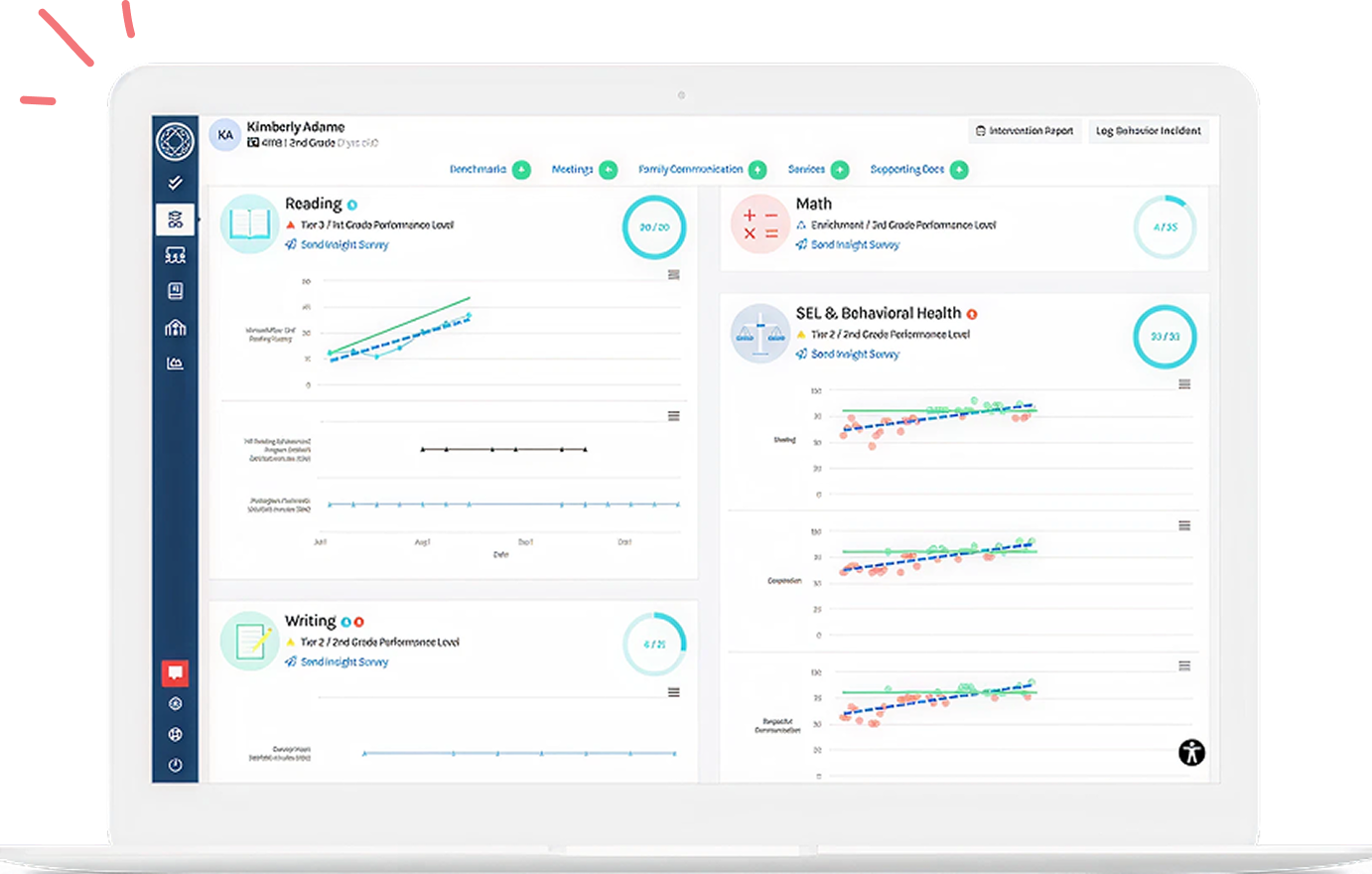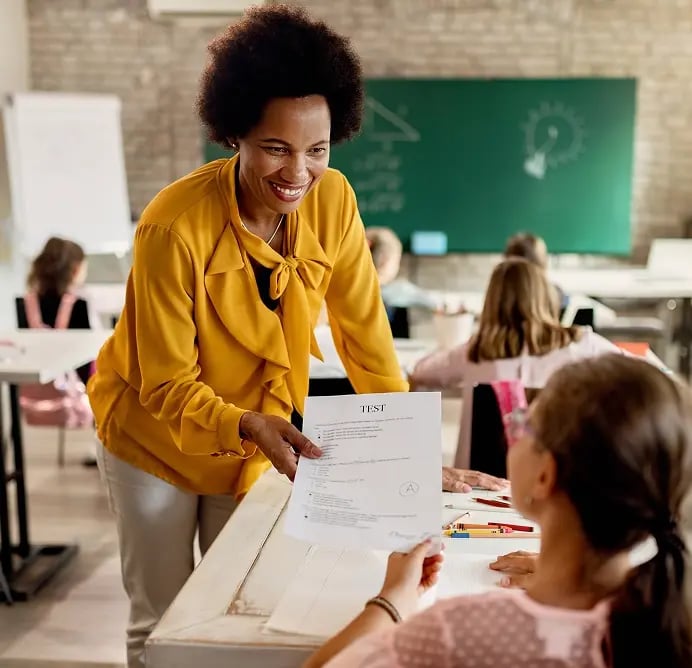As a former elementary teacher and recently retired elementary principal, I considered my students’ families to be vital partners. As such, the families were kept updated and given a voice regarding their child’s education. Gaining parent support is always crucial, especially when introducing a new initiative. However, it is what happens in the days, weeks, and months following that initial outreach that has an even greater impact on building home-school partnerships.
In relation to a Multi-Tiered System of Supports (MTSS), it is so important to keep ALL families informed about best practices EARLY and OFTEN, not just those who have students receiving a Tier 2 or Tier 3 level of support.
In this blog, I will discuss the importance of embracing our families as partners early in the MTSS implementation process, what this “looks” like, and how to overcome hurdles when doing so. I will address the following commonly asked questions that should be considered by your MTSS team:
- How can we help our families learn about and embrace the MTSS Standard Treatment Protocol?
- How do we facilitate family engagement to have our partners understand the importance of supporting their students at home and school?
- When do we begin communicating with our families about MTSS, and how do we ensure buy-in to MTSS processes?
- Which MTSS meetings should we invite our families to attend?
- What are some roadblocks we may encounter, and how do we overcome them in this process?
The Power of Embracing Families
Communicating with families was never an afterthought for my team and I, but rather something we considered whenever plans or decisions pertained to our students. For example, when my district was making decisions about providing our elementary students with iPads as a tool to support teaching and learning, parents were invited to information sessions. Our team posted information on social media and our district/school websites and sent emails and letters home to ensure we reached all our families. Not only was this out of respect for our parents, it also fostered a sense of community and partnership.
Engaging families helped to gain support and trust when making decisions about best practices to move the children forward academically, socially, and emotionally. I was proud to work shoulder-to-shoulder with my families to meet the needs of the children.
Bringing MTSS on board as the overarching “umbrella” to support ALL students was a new and exciting initiative in my district several years ago. As a member of the MTSS Committee, informing families about our intentions in a timely manner and educating them about this system was important to our team. We held several Family Nights to get the word out before implementing our new system. Our committee explicitly showed our family partners how they could help support their children at school and home. We did everything in our power to embrace our families and create a culture of inclusivity.
Why Is It Important To Keep ALL Families Informed About the MTSS Process?
We know parents and caregivers are crucial to providing our students with the best possible education. As educators, we have all experienced, and research shows that “…when families and communities are involved in their children’s education, students attend school more regularly, stay in school longer, and perform at higher levels.” (NEA, 2023) Therefore, it makes sense to bring ALL families into the MTSS loop to facilitate positive outcomes for the children, no matter their child’s current learning path.
Getting families on board in every aspect of their child’s education helps parents feel a sense of belonging in the school community and, therefore, more willing to partner with the school team to meet their child’s needs. “Researchers have found that the key to making the family-community-school relationship a success is by considering it a partnership of equals.” (Gilbert, 2023)
As a result, to ensure my team successfully brought families into MTSS processes, I utilized the chart below. The Branching Minds MTSS Standard Treatment Protocol is very useful here. It can be found in the left-hand column below, with suggestions I have created in the “Suggested Parent Communications” column on the right column based on my experience as a teacher and administrator.
|
MTSS Standard Treatment Protocol |
Suggested Parent Communications |
|
Identify students in need and root cause |
Email/letter home, phone call |
|
Create effective intervention plans |
Email/letter home, phone call |
|
Implement and monitor progress |
Parent-teacher conference, individual student support meeting, phone call |
|
Interpret and use data to adjust |
Parent-teacher conference, individual student support meeting, phone call |
Engaging Families Early – Understanding the Standard Treatment Protocol
In addition to the above chart, I found following questions helpful with my team to determine if we were effectively communicating about the protocol:
- Do your parents know that you screen your entire student body in reading and math three times a year? Are they aware that you give a behavior screener?
- Do your parents know that the data from this screening will inform the next steps to help the students meet learning/behavior goals?
- Do your parents understand what an “intervention” is and when it is used in MTSS?
- Do your parents realize that students who receive an intervention are assessed regularly (progress monitoring) and that this data is used to continue to inform MTSS-related decisions about their child?
Communication: Helping Families Support Students at Home and School and Ensuring MTSS Buy-In
Once again, I think it is essential to reiterate that parent partnership must not be an afterthought. As written by Larissa Napolitan in 5 Reminders to Strengthen and Foster Family Engagement Within the MTSS Process, “A Multi-Tiered System of Support (MTSS) is intended to address the needs of the whole child, and we cannot talk about serving the whole child without considering the family” (Napolitan, 2022).
Helping families understand the MTSS process by keeping them in the loop through each step is vital to ensuring buy-in. Providing transparent and honest communication about your district/school MTSS vision and mission is essential. To this end, review the following hints to support including parents early in the discussion:
-
Be mindful of parents’ learning curves and consider them at each phase of your district’s/school’s implementation plan.
-
Communicate early and often.
-
Advise families about universal screening; when it will take place, what it entails, and where their child will take the assessment. Include a calendar with universal screening dates.
-
After universal screening, share with families their child's scores and what they mean. If the child qualifies for a Tier 2 or Tier 3 level of support, communicate this to parents immediately, detailing what this will involve, and invite them to ask questions and/or voice concerns.
-
Daily communication regarding homework will be helpful for busy families (including any homework assigned in Tier 2 and Tier 3 interventions)
-
Provide progress monitoring data with an explanation of what the data means.
-
Give parents many opportunities to engage and plenty of notice about upcoming “events.”
-
Be cognizant of written and oral language barriers — provide access for all families.
-
Share student data in a user-friendly format - remember your audience!
-
Using various tools to connect will provide the best opportunity to reach all families. A communication survey is a great way to learn the best methods to reach out to your constituents.
💡 Check out this “BANK” of MTSS Family Connection Resources
Which MTSS School Meeting Should Families Attend?
As said above, keeping all families informed throughout MTSS processes will create a culture of inclusivity. Part of this culture includes problem-solving meetings. When meeting about a student who is receiving an intensive intervention, families must be invited to become part of the child-study team at the Individual Student Support Meeting. Branching Mind’s MTSS Meeting Guide and Toolkit provides information about this type of meeting as well as other meetings essential to the MTSS process.
Overcoming Potential Roadblocks With Engaging Families
“Parent support to help boost student learning is available to any school that makes the modest effort required to overcome the barriers that effectively prevent so many parents from getting involved” (J. Wherry, 2009). Meeting families where they are is crucial, no matter the roadblock. Be proactive and mindful about how best to keep families in the loop and engaged so they don’t feel overwhelmed. Below are possible roadblocks and suggested solutions to consider:
|
Roadblock |
Suggested Viable Actions |
|
Families have varying work and life schedules. |
Schedule parent information sessions at different times of the day and provide many options to choose from. |
|
Families are sometimes hesitant about going somewhere that is unfamiliar. |
Give choices by holding the sessions in several district school buildings so that families can attend in a place where they are comfortable. |
|
Families are busy and do not always have time to schedule a meeting on your schedule. Also, sometimes they are vulnerable and shy about seeking out teachers/administrators. |
Be visible and approachable during arrival and dismissal times so families feel comfortable asking questions or chatting about the process. |
|
Reading a lengthy letter can be time-consuming and overwhelming. In addition, language barriers may prevent families from accessing information. |
Create an MTSS brochure (translated into various languages) that outlines the key components of the process. |
|
Communication sent home is often left in a child’s backpack or set aside to read at a later time. |
Consider virtual tools that can help to reach your audience promptly. |
|
Educational jargon can be confusing, leading to families disengaging from the information you are attempting to provide. |
Put an MTSS section in your monthly family newsletter. Exclude educational terms that may not be easily understood. |
In Conclusion
So, when is the “right” time to involve parents in the MTSS process?
As soon as possible! Even if students are not showing a need to receive supplemental or intensive support to meet academic and SEL learning goals, parents need to understand how we wrap our arms around the student body to ensure that each child is getting the support they need to be successful. We know the adage, “knowledge is power.” Empower your families to be a partner in their child’s education.
Need additional resources regarding where to begin in building partnerships with families to strengthen your MTSS? Check out these resources:
- RESOURCE BANK: A "BANK" of MTSS Family Connection Resources for Educators
- BLOG: How to Speak with Families and Communities about MTSS
- BLOG: 5 Reminders to Strengthen and Foster Family Engagement Within the MTSS Process
- GUIDE: Communicating MTSS with Families and Communities
|
Key takeaways from this article:
|
Citations
Shattering Barriers to Parent Involvement, https://www.naesp.org/sites/default/files/resources/2/Principal/2009/M-J_p07.pdf. Accessed 25 January 2023.
“Family Support | NEA.” National Education Association, https://www.nea.org/student-success/engaged-families-communities/family-support. Accessed 28 January 2023.
Gilbert, Elizabeth. “Positive Family and Community Relationships.” Greater Good In Education, https://ggie.berkeley.edu/school-relationships/positive-family-community-relationships/. Accessed 25 January 2023.
About the author
Branching Minds
Branching Minds is a highly respected K-12 services and technology company that leverages the learning sciences and technology to help districts effectively personalize learning through enhancements to their MTSS/RTI practice. Having worked with hundreds of districts across the country, we bring deep expertise in learning sciences, data management and analysis, software design, coaching, and collaboration. Combined with our extensive toolkit of resources, PD, and technology, we provide a system-level solution. We are more than a service or a software provider, we are partners who will deliver sustainable results for educators, and a path to success for every learner.

Your MTSS Transformation Starts Here
Enhance your MTSS process. Book a Branching Minds demo today.


















.png?width=716&height=522&name=Addressing%20Foundational%20Reading%20Skills%20in%20MTSS%20(preview).png)
